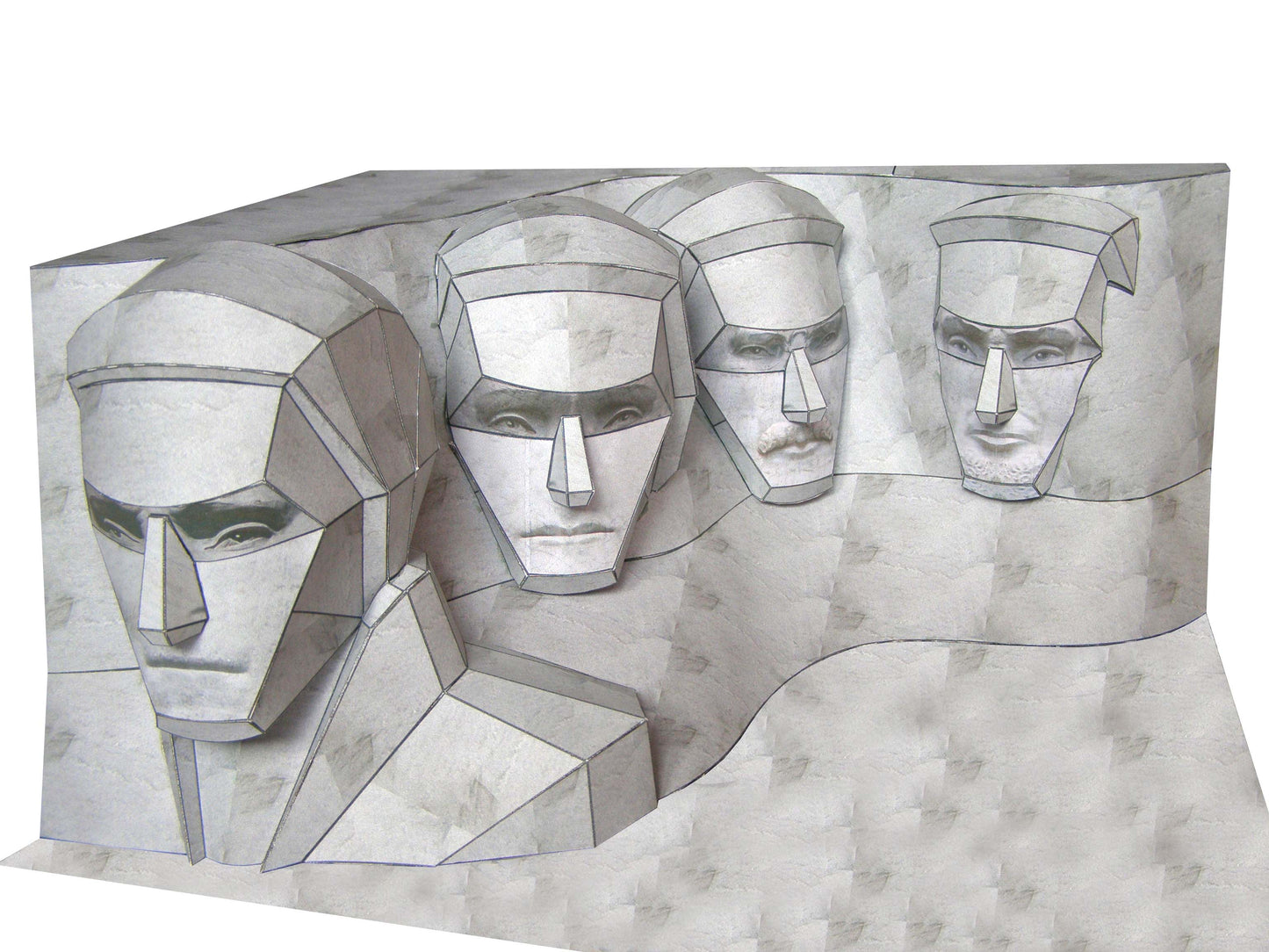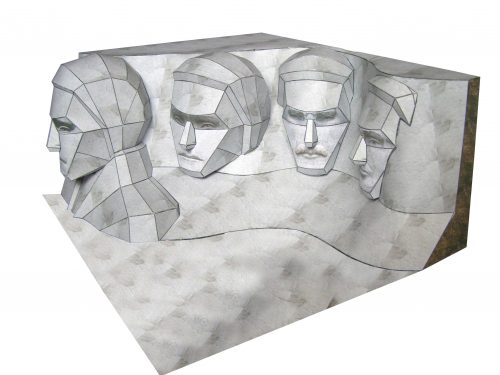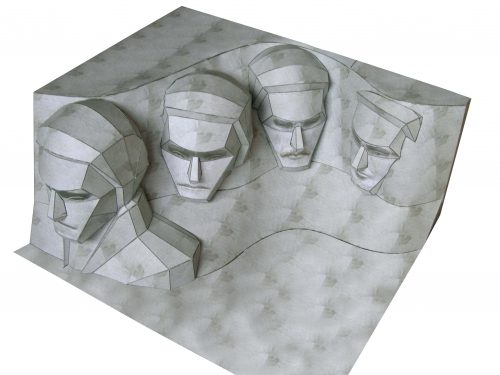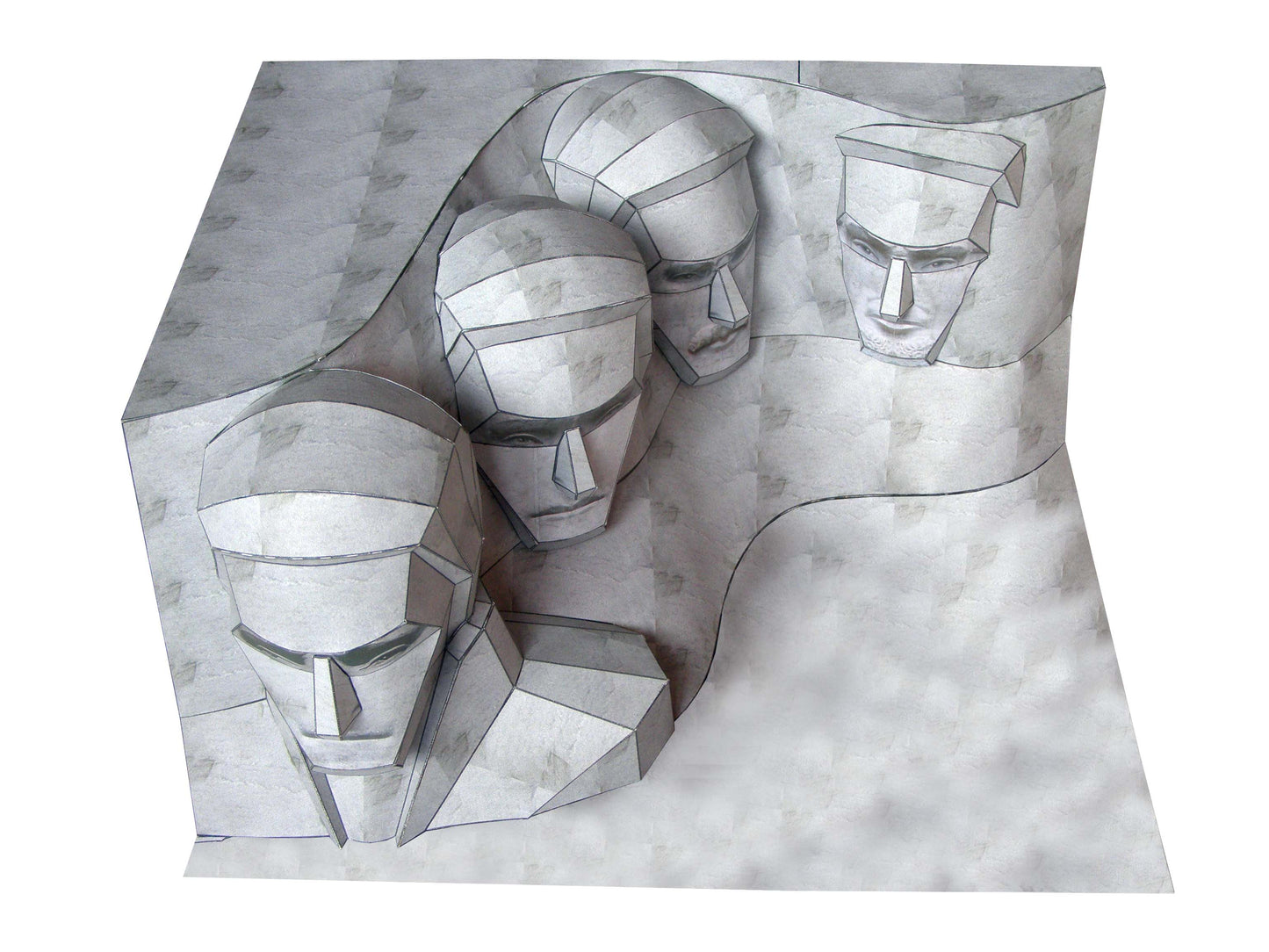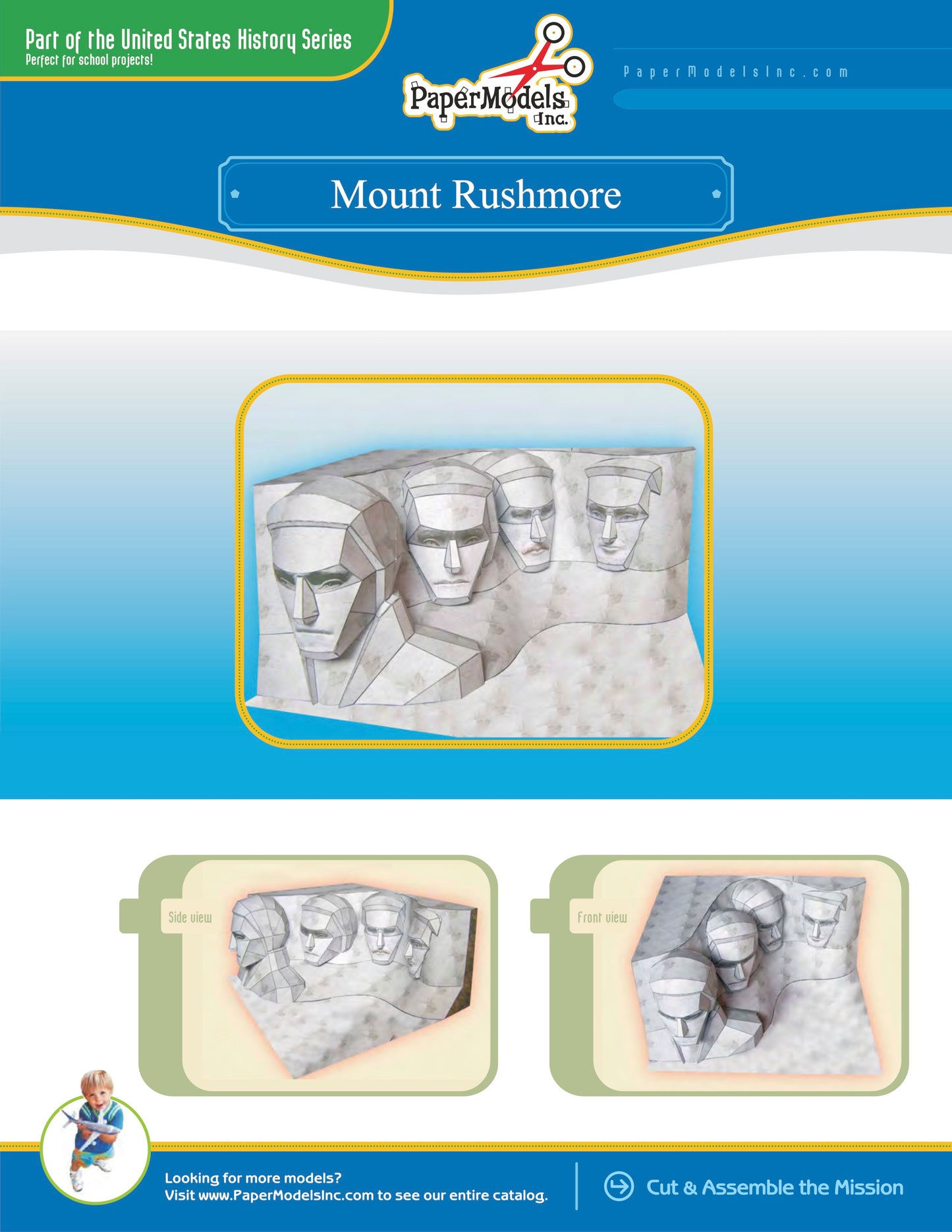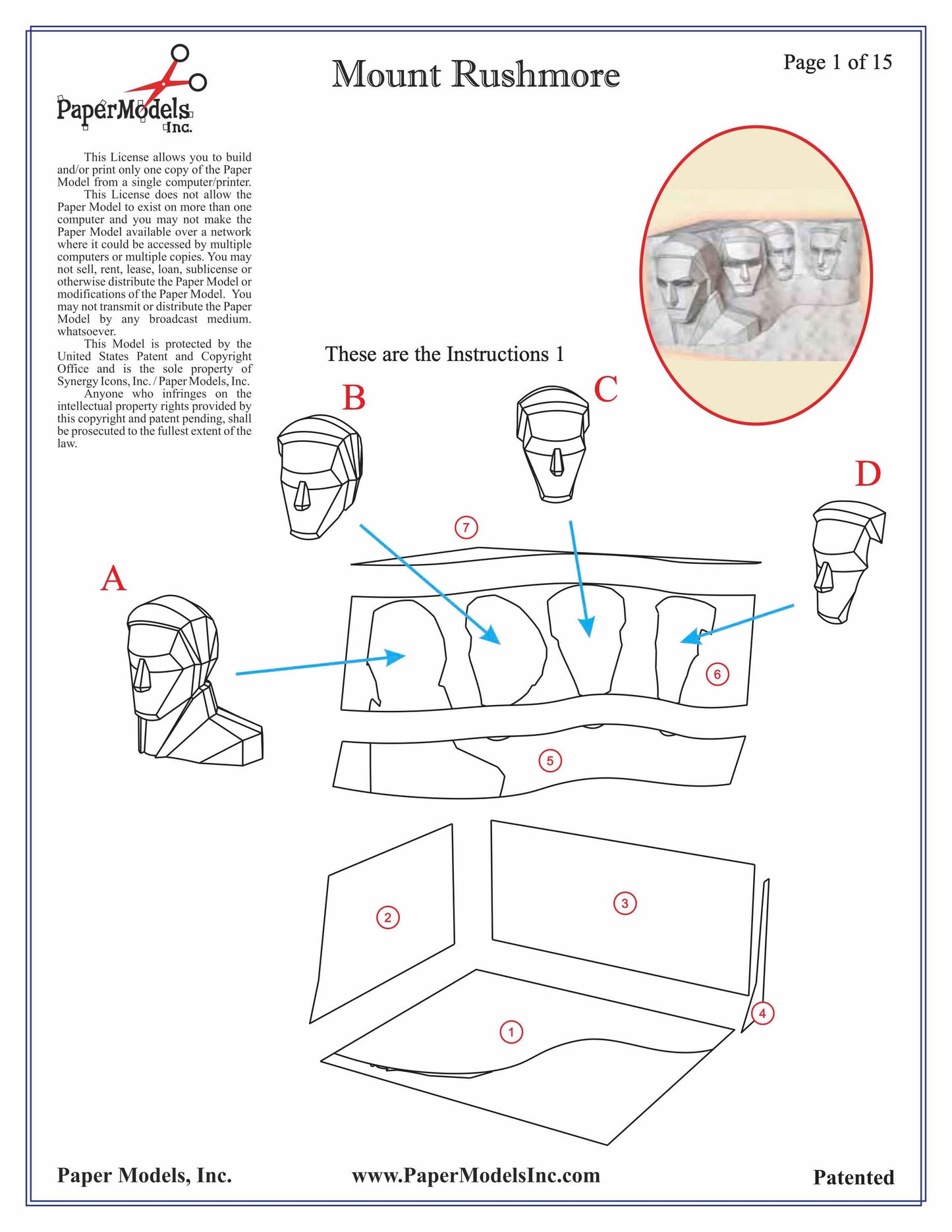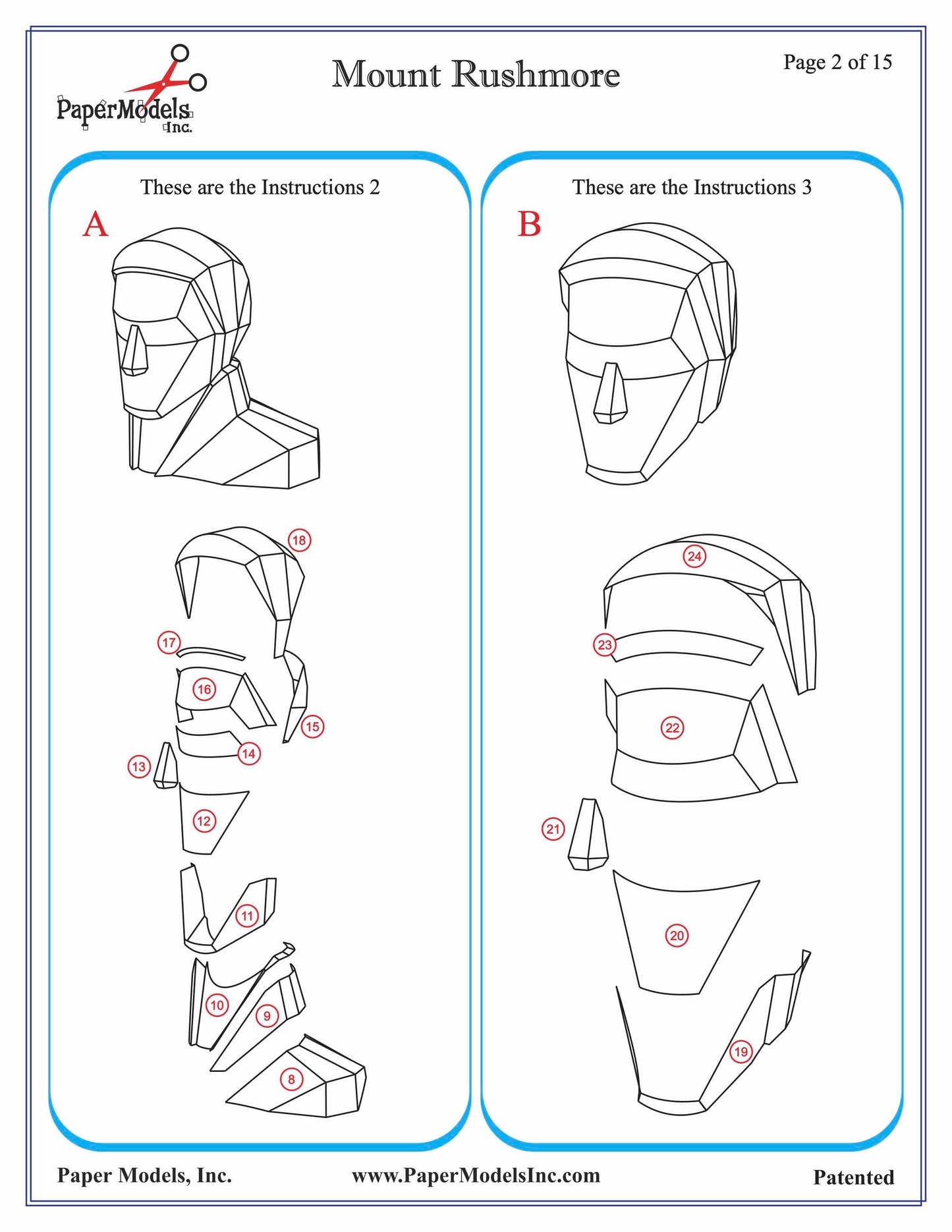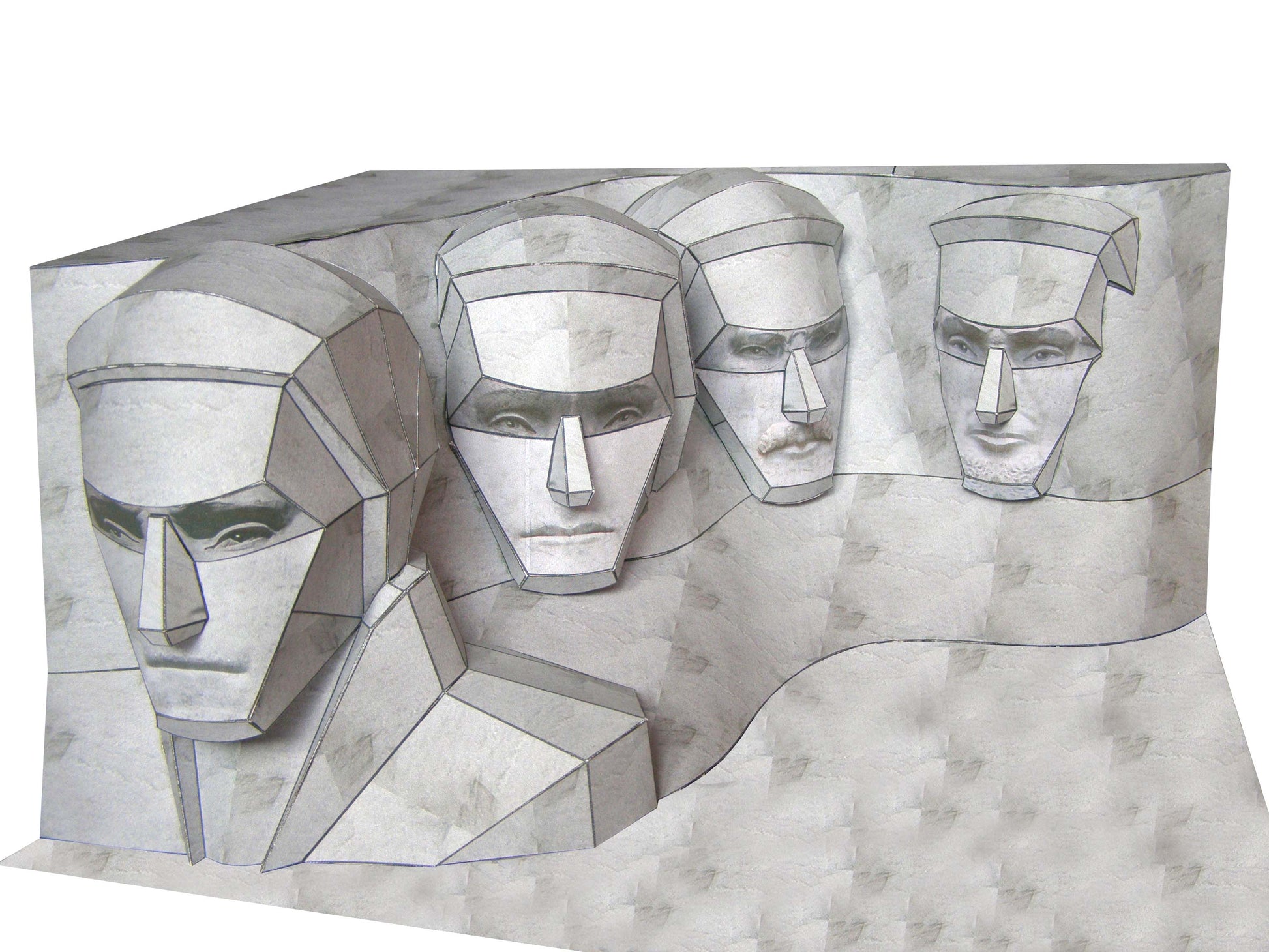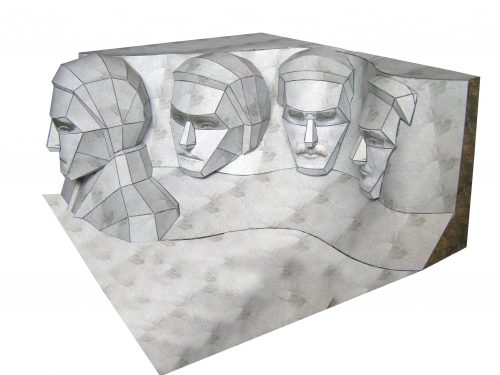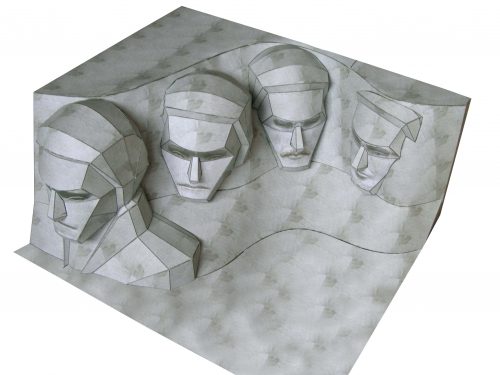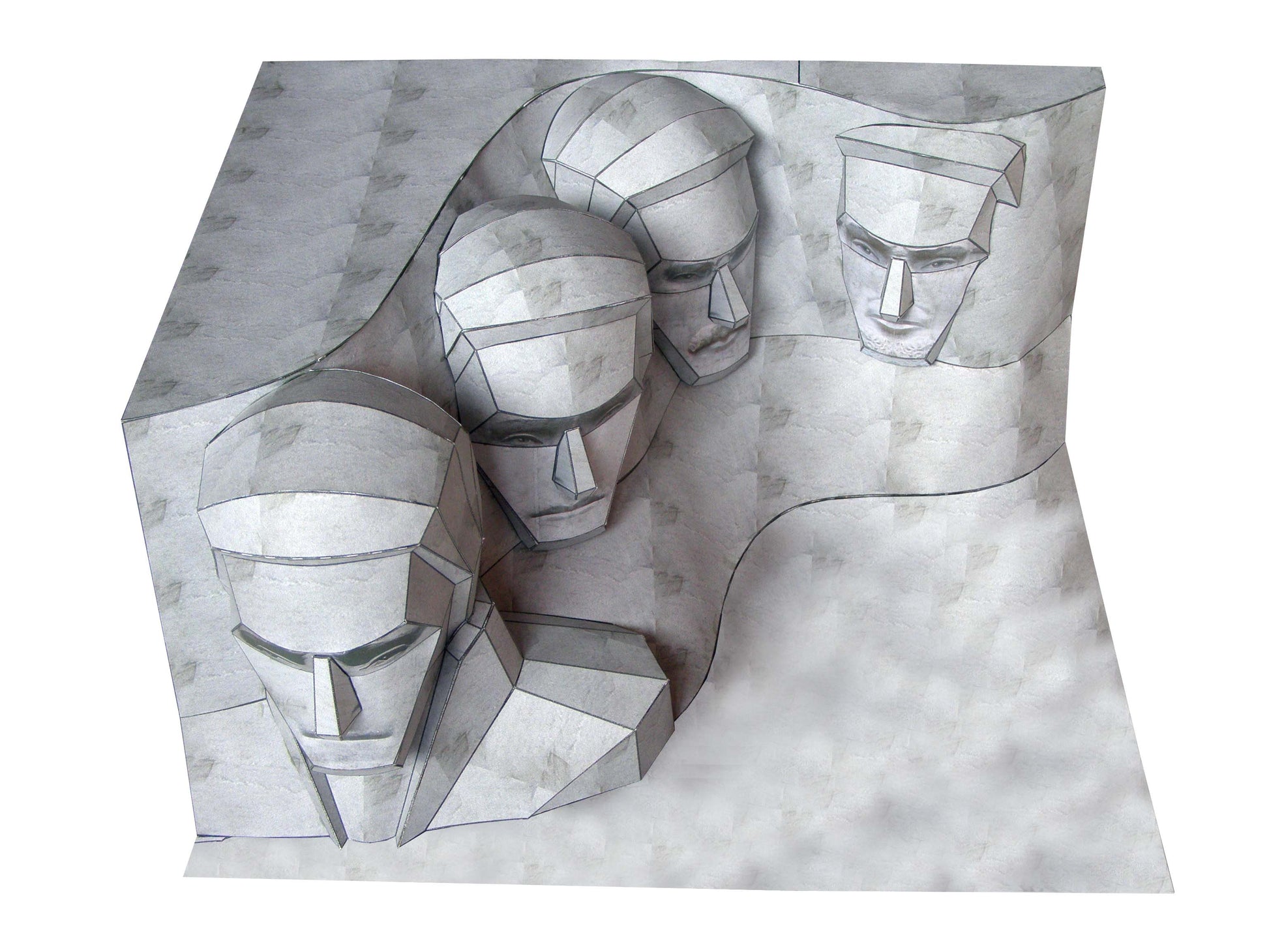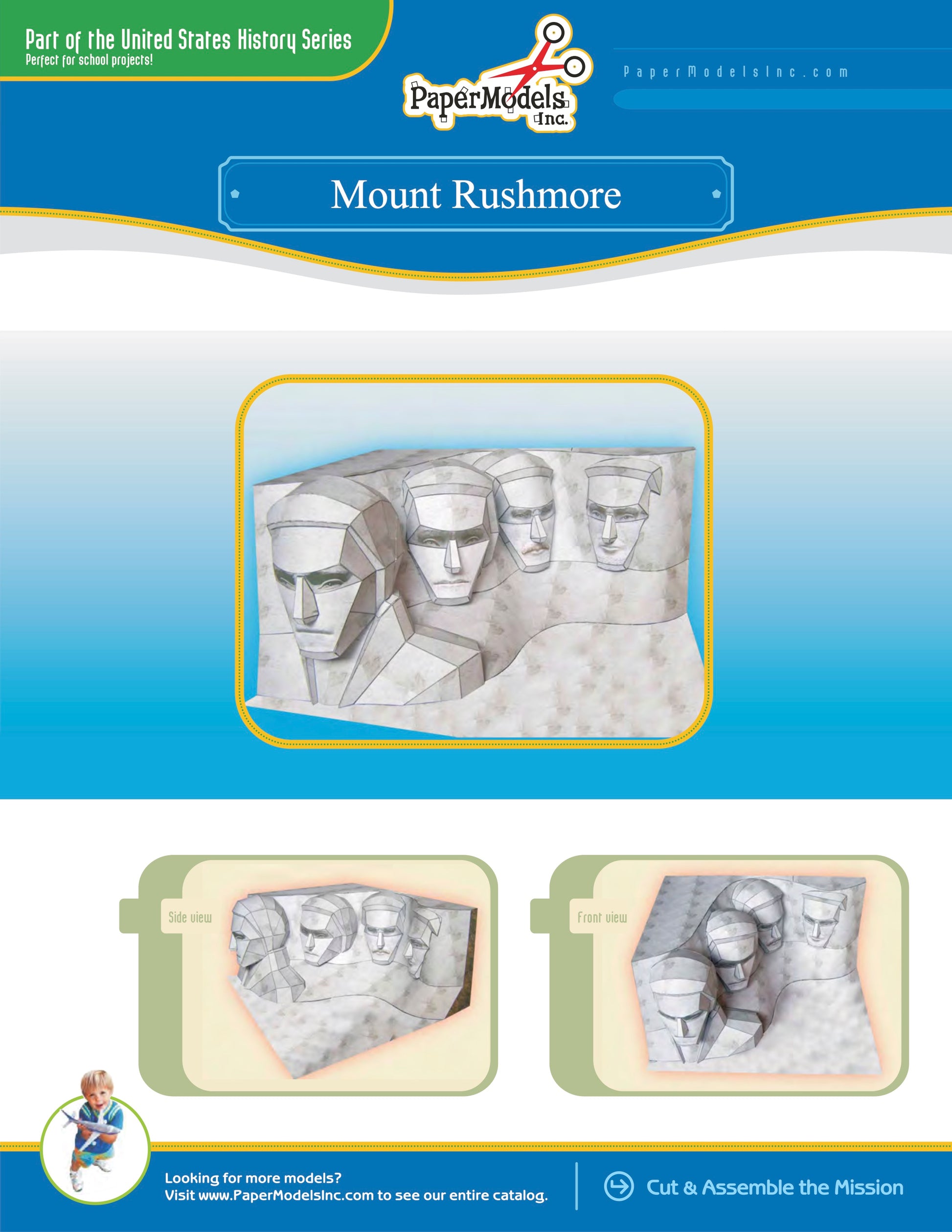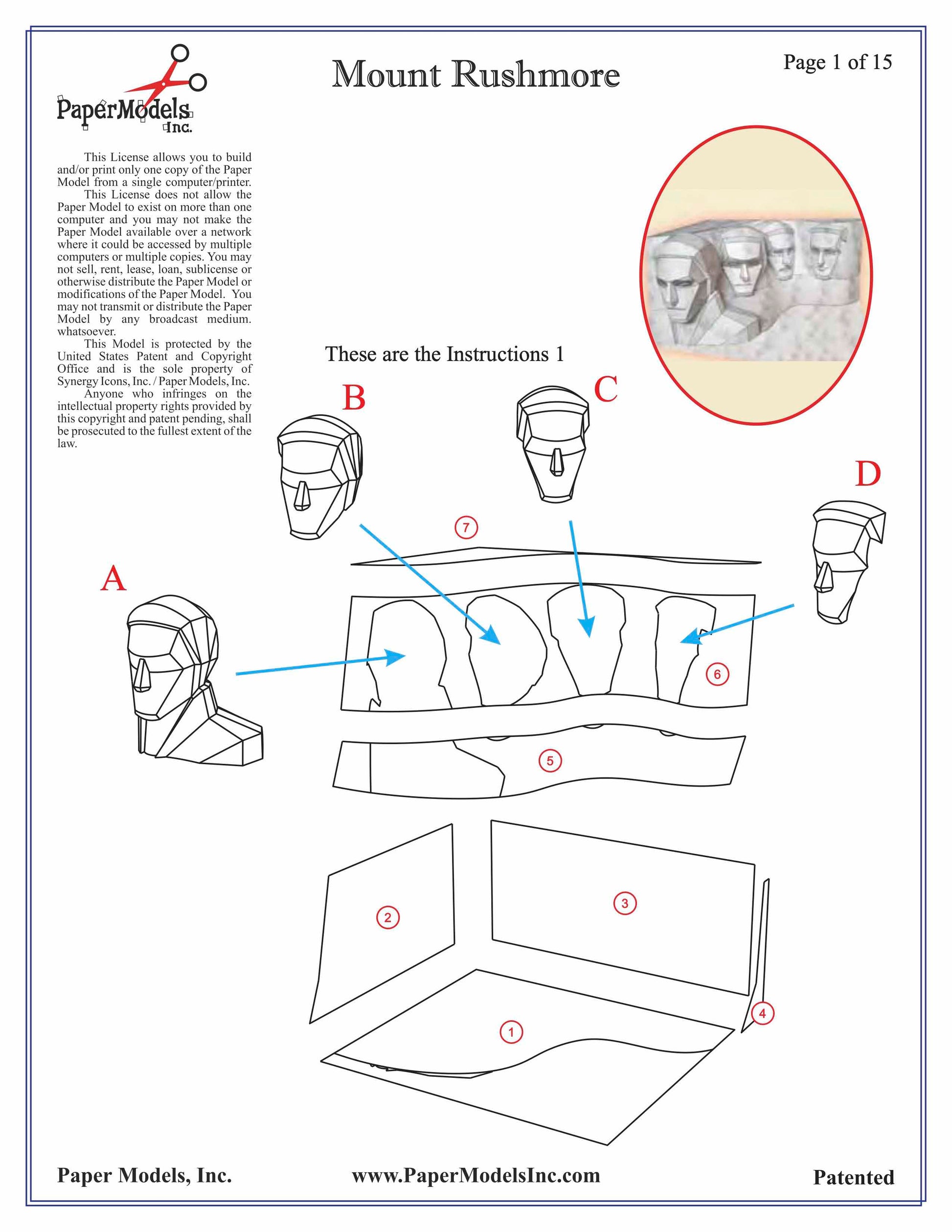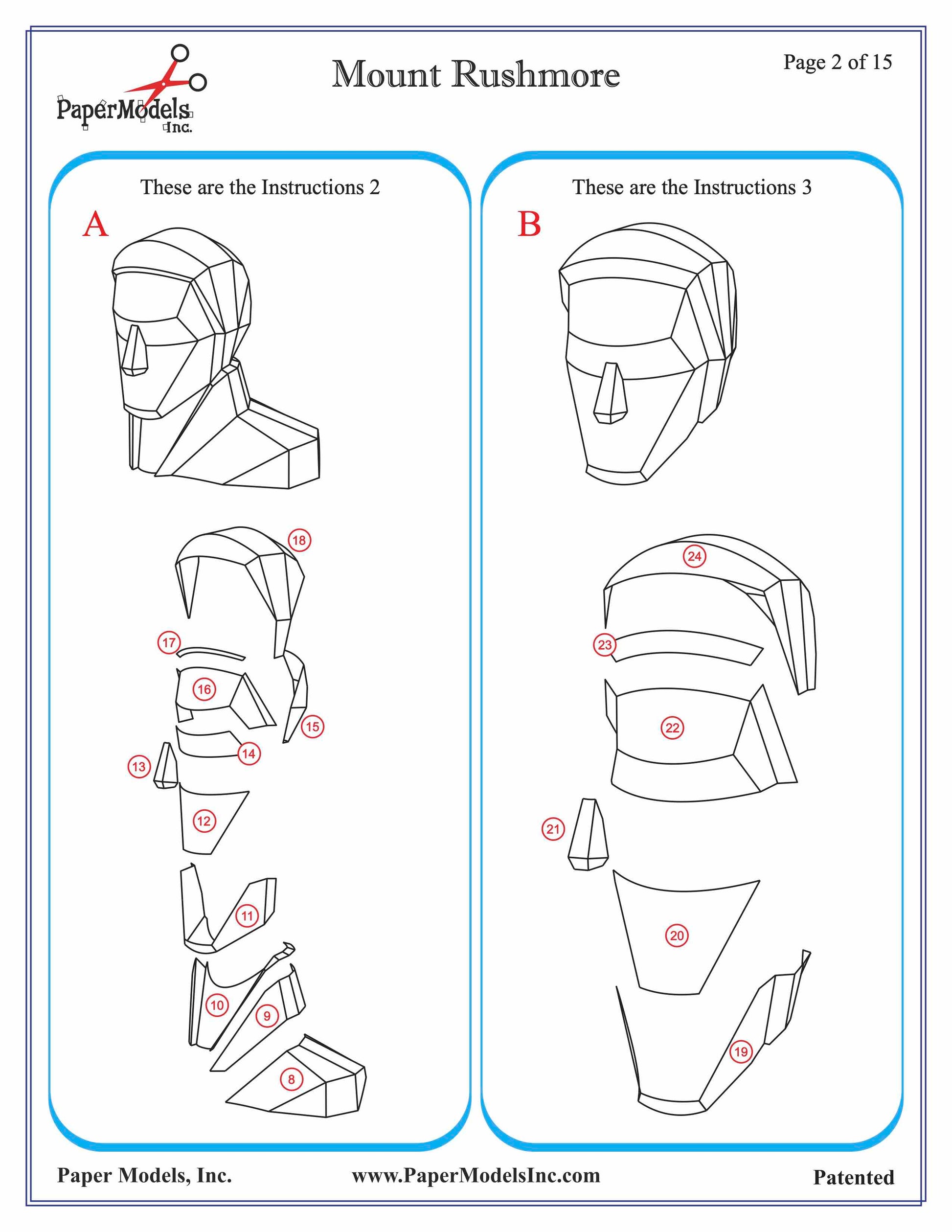Mount Rushmore Monument - Paper Model Project Kit
Mount Rushmore Monument - Paper Model Project Kit
No se pudo cargar la disponibilidad de retiro
🌟 Welcome to Paper Models Online – Your Shortcut to Academic Excellence! 🌟
Are you tired of stressing over last-minute school projects? Look no further! Paper Models Online is here to make your academic life a breeze.
🚀 Why Choose Us?
At Paper Models Online, we understand the pressure of looming deadlines and the desire for that coveted "A" grade. That's why we've crafted the perfect solution for you! Whether you're a student aiming for extra credit, a parent looking for quality time with your kids, or just someone in need of a break from the chaos, our paper models are your ticket to success!
💻 Instant PDF Download OR Pre-Printed & Shipped
You're in control! Choose from our instant PDF download, starting at just $9.95 for the 7"x10" size or $11.95 for the 10"x13" size.
Print it on your home or office printer using regular paper, or opt for the hassle-free pre-printed option. We'll ship it directly to your doorstep for a flat $5 fee via USPS First-Class Parcel, ensuring you get it in 1-3 days!
✂️ Easy Assembly, Maximum Impact
With just a pair of scissors, some glue, and an hour of your time, you can turn these paper sheets into stunning three-dimensional architectural replicas or complete science projects. The images on our website are real models made from our kits, and we even provide a history to help you craft an impressive report.
🎨 Unleash Your Creativity
Not into mission kits? No worries! Our models double as templates for your creative genius. Paint, trace, adjust sizes—your imagination is the only limit! Create a custom masterpiece that reflects your unique style and personality.
🛒 The Buying Process Made Simple
- Choose Your Size: 7"x10" or 10"x13"
- Choose Your Delivery: Instant PDF download or pre-printed and shipped
- Purchase Your Model: It's that easy!

📦 Typical Kit Sample
Each kit includes 8 to 18 pages, providing everything you need to bring the model to life. An "exploded view" guides you through assembly, and a complimentary history adds that extra touch for your report. Impress your teacher not just with creativity but also with your research skills!
Don't let deadlines stress you out. Choose Paper Models Online for your next school project, and let us be Your Best Way To Get An "A"! 🌟
 |
 |
 |
| Exploded View | Sample Pieces | Finished Model |
Free History For Your Report
Mount Rushmore
The Mount Rushmore National Memorial is located just outside of Keystone, South Dakota, and is a large granite carving featuring the heads of four former Presidents of the United States of America. Mount Rushmore was originally known among the Lakota Sioux Native Americans as “Six Grandfathers,” and was held as a sacred site in their culture. The Six Grandfathers Mountain, as explained, was a portion of trail traveled by Black Elk, a Lakota leader whom first discovered the mountain during a spiritual journey. From that point on, the surrounding Black Mountain region became very sacred to the local peoples, and their hold on the land eventually led them to war with the United States in 1866-68.
Known as the Red Cloud War – an attempt by the US to seize the Black Mountains and surrounding land from the hands of the Lakota Sioux tribe, it was eventually ended in 1868 by The Treaty of Fort Laramie – an agreement between the United States and the local tribes, guaranteeing the Lakota perpetual ownership of the Black Mountains and hunting rights to the surrounding land. By 1877, American gold prospectors repeatedly violated the rights of the treaty by prospecting on Lakota land, leading to the Black Hills War (also known as the Little Big Horn Campaign).
The Black Hills War led to the confrontation of Ulysses S. Grant against Tasunka Witko (Crazy Horse) and Tatanka Iyotake (Sitting Bull), culminating in an eventual US-led seize of the land that was guaranteed to the Lakota tribe only a mere decade before (the Sioux Nation would eventually receive a financial compensation for this injustice, during a court victory in 1980).
Eventually, as South Dakota was rolled into the United States, the task to increase tourism to the Black Hills of the area was shouldered upon Doane Robinson, a state historian. After reading an article about Georgia’s Stone Mountain (a large granite mountain whereon a large bas-relief of the Confederate States is carved), Robinson was inspired to carve his local granite cliffs, the Needles, into a monument as well. After the Needles proved to be too unstable to support carving, the largely-exposed Six Grandfathers (now renamed Mount Rushmore, after prominent New Yorker Charles E. Rushmore, whom went on expedition there in 1885) was chosen as an alternate site.
The next year, in 1942, Robinson invited Gutzon Borglum, the carver mainly responsible for Stone Mountain, to the area to inspect Mount Rushmore. After a Congressional debate, Congress assembled the Mount Rushmore National Memorial Commission on March 3rd, 1925. This didn’t come without input from President Calvin Coolidge, however, who insisted that only the first 150 years of American history be depicted, including an image of George Washington and two images of Republicans, and one Democrat.
Work by Borglum and 400 other workers, using dynamite and chisels, commenced on October 4th, 1927. The plan consisted of four 60-foot faces of four presidents: George Washington, Thomas Jefferson, Theodore Roosevelt, and Abraham Lincoln. The four presidents were chosen due to their contribution to the expansion of the Western Territory. The plan also included the carving of the President’s collars and coats down to the waist. The first carving, that of the head of Washington and a bit of his coat, was dedicated on July 4th, 1934. Two years later, the face of Jefferson was dedicated, followed by Abraham Lincoln in 1937.
The planned figure of Roosevelt was still being worked on at this time, but Congress had introduced a new bill to add a fifth head to the sculpture, that of Susan B. Anthony, a civil rights leader. The Bill was passed, but soon a rider to another bill was also passed, only allowing funds to complete the existing heads which were already started. This meant no fifth figure, and no money allotted to finish the complete sculpture of the collar and coats. Rather than a powerful mountain featuring the presidents rising from the ground, only the heads would be finished, overlooking South Dakota from a granite cliff. In 1939, Roosevelt’s face was completed.
In 1966, Mount Rushmore was added to the National Register of Historic Places, and was finally dedicated officially as a complete monument in 1991, by President George H.W. Bush. In 1998, a canyon featuring a cut chamber into the rock was added behind the monument, featuring panels inscribed with the Constitution and Declaration of Independence, as well as biographies of the presidents and sculptors. In 1948, the Sioux Nation started work on a much larger mountain sculpture, this one a tribute to Crazy Horse, as a social and political statement to the US treaty violation and carving of the sacred Six Grandfathers Mountain. That monument, which has been met with great criticism from Native American tribes, remains only partially completed.
© Copyright – Paper Models, Inc. – All Rights Reserved
Share
